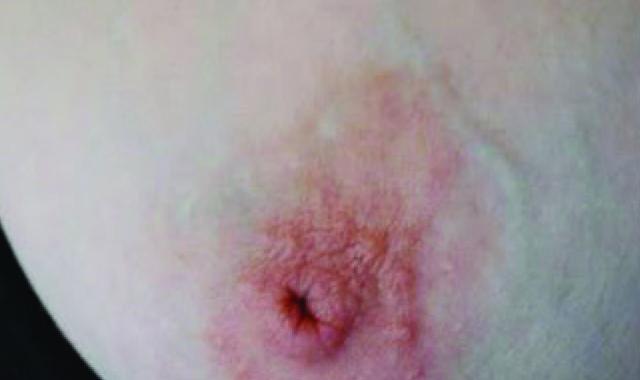Yes, you can still breastfeed if you have flat or inverted nipples.

Nipples vary in shape, size and how they look. Some women also have one nipple that looks different from the other. Most nipples stand out from the areola (the coloured area around your nipple).
Flat nipples are level or almost level with the areola. Inverted nipples do not protrude from the level of the areola but are retracted inwards instead. Between 3 and 10% of women have flat or inverted nipples.
Some nipples may look inverted but can be brought out by stimulation or a little suction. Some are fully stuck inwards. During pregnancy, flat and inverted nipples may become more able to stand out from the areola.

Do I need to prepare my nipples for breastfeeding?
You don't usually need to do any nipple preparation before your baby is born, even if you have inverted or flat nipples. All nipples tend to become more supple during pregnancy, so there is no need to be too concerned while you're pregnant or in the early stages of establishing breastfeeding.
It's worth noting that babies breast feed, they don't nipple feed.
Helping your baby attach
If you have flat or inverted nipples, your baby is more likely to attach and feed well if they become used to breastfeeding from very early on. A few things can help:
-
During the first few days, before your milk supply increases, your breasts are still soft. This can make it easier for your baby to take a large mouthful of breast, including your flat nipple.
-
You may find it helpful to shape your breast a little to help your baby get a deep attachment.
-
Hold your baby skin-to-skin as much as possible and feed frequently in the first few days, so you both get lots of practice.
-
Ask for help with positioning and attaching your baby from your midwife or Lactation Consultant.
-
It helps to avoid bottle teats and dummies soon after birth, as these are very different in shape to an inverted or flat nipple. If your baby needs supplements for medical reasons, ask to feed them using a cup or syringe.
-
If possible, avoid medications during labour so your baby is more likely to be fully alert after the birth. This helps them to use their inborn feeding-related reflexes for the first feeds.
-
If your breasts become engorged your baby may find it harder to attach. There are techniques you can use to soften the area around your nipple to make it easier for your baby to attach.
Helping your flat or inverted nipple to stand out
-
Try drawing it out either manually or with a breast pump.
-
Try some nipple stimulation.
-
Using a cold compress may help the nipple to stand out more.
Some mums find that when their baby takes a large mouthful of breast, the nipple is drawn out with the baby's suck. For some mums, their nipple remains drawn out for a while after a feed. For others, the nipple remains 'out’ for the whole period of breastfeeding, and then reverts back to inverted once they have weaned their baby.
If you keep having problems
If your baby continues to have ongoing problems with attachment once your milk supply has increased, a nipple shield may be helpful. Seek in-person help from an ABA breastfeeding counsellor or lactation consultant.
Rest assured, many mothers who have difficulties breastfeeding due to the shape of their nipples the first time around often find that things are easier the second or third time around.
As one mother said: "My advice for women with inverted nipples is that you can breastfeed your kids. I won’t say it will be easy, but with the right support, information and equipment, you can do it and it will be worth every minute".
© Australian Breastfeeding Association February 2023


